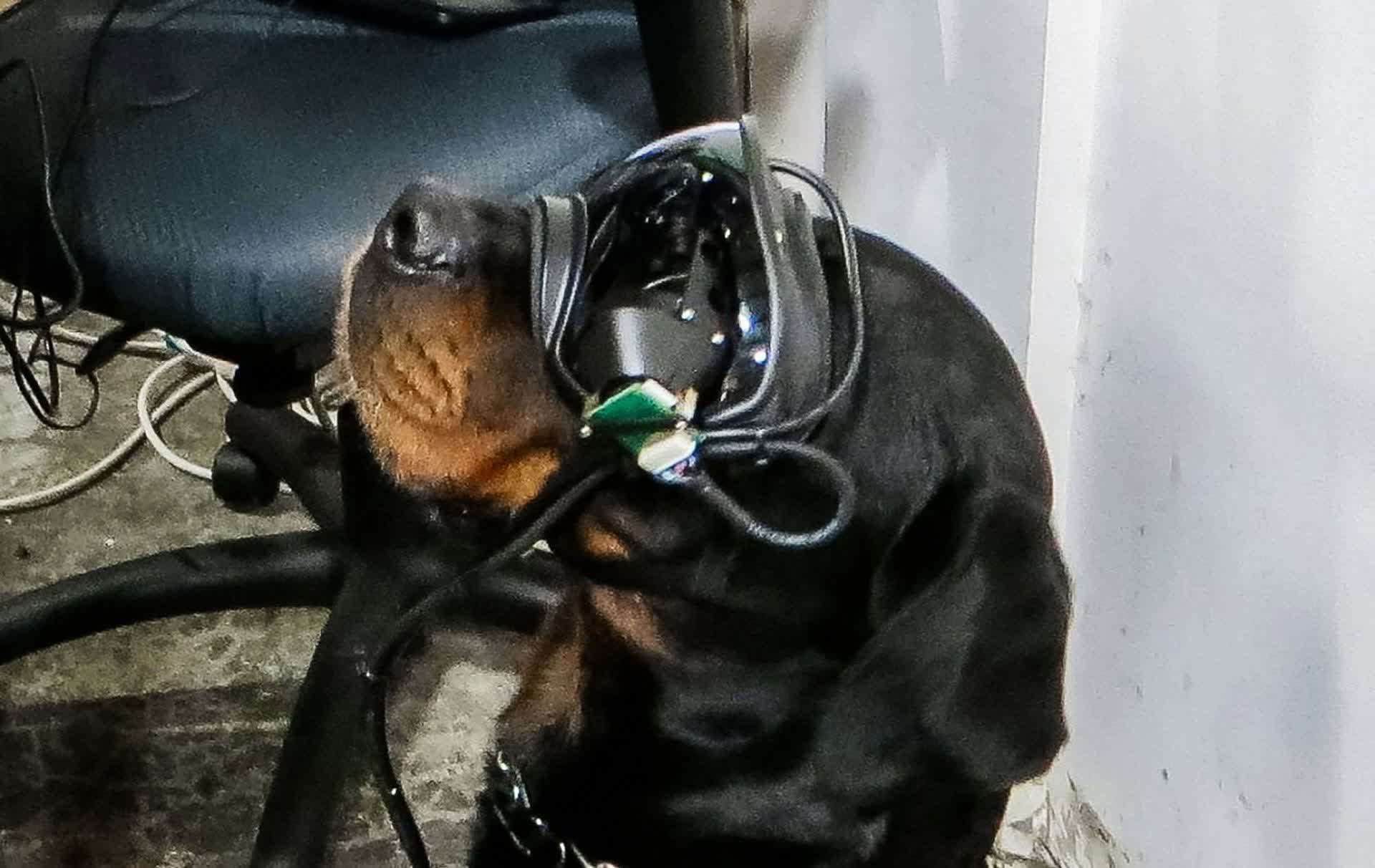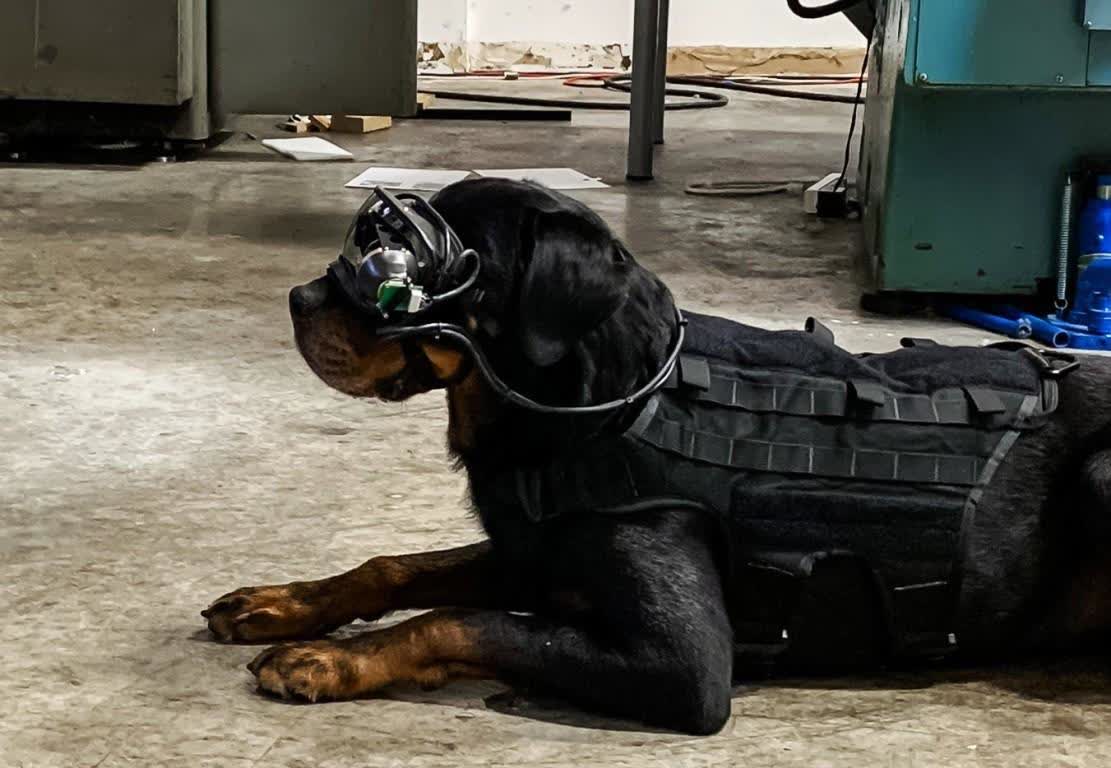WTF?! While we're still waiting for virtual reality to take off, augmented reality is increasingly finding more use, especially in enterprise applications. It's also being utilized by the military---and not just for humans. A new trial involves combat dogs being fitted with AR goggles so soldiers can instruct them from a distance.
The technology is the work of a Seattle-based company called Command Sight and is part of a project for the Army Research Laboratory (ARL). The goggles give dogs visual cues to follow, rather than soldiers guiding them using hand signals and laser pointers, both of which require the handlers to be nearby. They also have cameras so that soldiers can see everything on a remote video feed.
The dogs are trained to follow the visual indicators displayed by the goggles, allowing them to be directed to a specific location.
"AR will be used to provide dogs with commands and cues; it's not for the dog to interact with it like a human does," said Dr. Stephen Lee, a senior scientist with the ARL.

Each pair of goggles is designed to fit each dog based on 3D scans that provide information relating to where the optics and electrical components should be placed.
Wearing goggles isn't something new for military dogs; they're worn for aerial drops and during bad conditions.
Remote communication with military dogs has been attempted using cameras and walkie-talkies in the past, but neither worked particularly well. "Even without the augmented reality, this technology provides one of the best camera systems for military working dogs," said Lee. "Now, cameras are generally placed on a dog's back, but by putting the camera in the goggles, the handler can see exactly what the dogs sees, and it eliminates the bounce that comes from placing the camera on the dog's back."
Command Sight was founded in 2017 by Dr. A.J. Peper to improve human-animal communications in the field. Much of the research was carried out on his own dog---a Rottweiler named Mater.
Peper said the project was still in its "beginning research stages," but that early results were "extremely promising." The company has been given extra funding to make a wireless version that should be a lot more practical than the current wired version.
